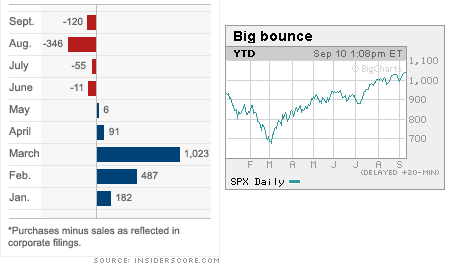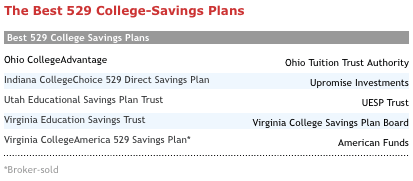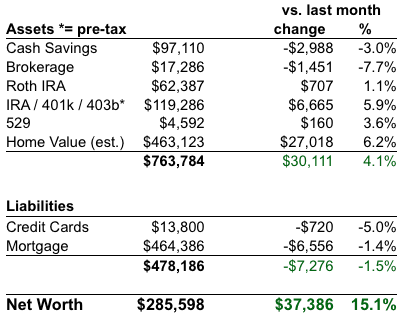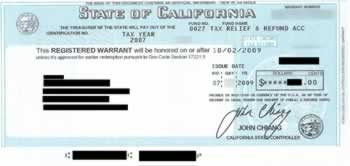 I ran across another nice tidbit from the book The Undercover Economist by Tim Harford the other day, which like the concept of price targeting, also manages to involve supermarkets. I guess everyone goes to supermarkets. 🙂
I ran across another nice tidbit from the book The Undercover Economist by Tim Harford the other day, which like the concept of price targeting, also manages to involve supermarkets. I guess everyone goes to supermarkets. 🙂
In a chapter exploring stock market pricing, he covers the the idea of rational investors, the “efficient market theory”, and the related “random walk hypothesis”.
You can see the same phenomenon at work at the supermarket checkout. Which line is the quickest? The simple answer is that it’s just not worth worrying about. If it was obvious which line was the quickest, people would already have joined it, and it wouldn’t be the quickest any more. Stand in any line and don’t worry about it. Yet if people really just stood in any line, then there would be predictable patterns that an expert shopper could exploit; for example, if people start at the entrance and work their way across the store, the shortest line should be back near the entrance. But if enough experts knew that, it wouldn’t be the shortest any more.
The truth is that busy, smart, agile, and experienced shoppers are a bit better at calling the fastest lines and can probably average a quicker time than the rest of us. But not by much.
To me, this is a nice and simple way to explain the argument of efficient markets to say, a fifth-grader. If the market price of a stock was a lot lower than the “true” value, people would start buying, and soon the market value would equal true value. Even someone that young can appreciate trying to pick the shortest line, weighing the possibility of getting through quicker with the possibility of ending up actually waiting longer than if I had just stayed put. In the end, how much do you really gain on average?
Relative Efficiency
I would expand this analogy a bit further, however. In the stock market, if you can reliably “beat” the average person by just a few percentage points a year, you would become rich. Really rich. In the supermarket, the prize is a few extra minutes. I think people would agree that a lot more people around the world are trying a lot harder to get rich, than people are trying to get through the supermarket line. In the stock market, you’re trading against professional arbitrageurs and some supercomputer programmed by a genius hired by Goldman Sachs.
Imagine a supermarket full of world-class athletes connected via radio to spotters placed above each checkout line! This constant competition increases the “efficiency” of the market, and therefore makes it much harder to be above average.
Switching Costs
Despite the slight chance of improvement, I still like to try and find the shortest line at the supermarket. But what if I had to pay 50 cents every time I switched lines? I’d probably stay put.
This is similar to what happens when you try and actively trade the stock market. An actively managed mutual fund will cost nearly a full 1% of your total assets a year, while a passive index fund will be around 1/5th that cost (0.20%). Over time, that really adds up. If you do it yourself, you’re also looking at stock commissions. If you spent $10 a trade and bought $500 of a single stock a month, that’s a 2% hit for a buy, and 4% round-trip. High costs are the primary reason why you always hear that actively managed funds don’t outperform index funds.
In the land of investing, you can keep trying to pick the fastest line, but be realistic about the competition and watchful of your costs. By “staying put” with low-cost mutual funds, you’re guaranteed to be above average.
 Along with the
Along with the  Yesterday, Mint.com announced that they were acquired by Intuit for $170 million. Not too shabby. Intuit is best known for personal finance products such as Quickbooks, Quicken, and TurboTax. They also released Quicken Online last year, which was basically a direct competitor to Mint.com. Both aggregate your spending and income by automatically accessing the data your financial websites, and analyze your habits for you. However, according to their
Yesterday, Mint.com announced that they were acquired by Intuit for $170 million. Not too shabby. Intuit is best known for personal finance products such as Quickbooks, Quicken, and TurboTax. They also released Quicken Online last year, which was basically a direct competitor to Mint.com. Both aggregate your spending and income by automatically accessing the data your financial websites, and analyze your habits for you. However, according to their 




 Recently, I’ve been taking another look at investing in California municipal bonds. Even if you don’t live in California, the yields can be quite attractive. But is it a good idea?
Recently, I’ve been taking another look at investing in California municipal bonds. Even if you don’t live in California, the yields can be quite attractive. But is it a good idea?
 You can get a free Chick-fil-A Original Chicken sandwich today 9/7 if you show up wearing your team logo. You can also get a coupon by mail for a free Chick-fil-A Original Chicken Sandwich if you sign up for their newsletter (first 250,000). More info and sign up at
You can get a free Chick-fil-A Original Chicken sandwich today 9/7 if you show up wearing your team logo. You can also get a coupon by mail for a free Chick-fil-A Original Chicken Sandwich if you sign up for their newsletter (first 250,000). More info and sign up at 
 The Best Credit Card Bonus Offers – March 2024
The Best Credit Card Bonus Offers – March 2024 Big List of Free Stocks from Brokerage Apps
Big List of Free Stocks from Brokerage Apps Best Interest Rates on Cash - March 2024
Best Interest Rates on Cash - March 2024 Free Credit Scores x 3 + Free Credit Monitoring
Free Credit Scores x 3 + Free Credit Monitoring Best No Fee 0% APR Balance Transfer Offers
Best No Fee 0% APR Balance Transfer Offers Little-Known Cellular Data Plans That Can Save Big Money
Little-Known Cellular Data Plans That Can Save Big Money How To Haggle Your Cable or Direct TV Bill
How To Haggle Your Cable or Direct TV Bill Big List of Free Consumer Data Reports (Credit, Rent, Work)
Big List of Free Consumer Data Reports (Credit, Rent, Work)